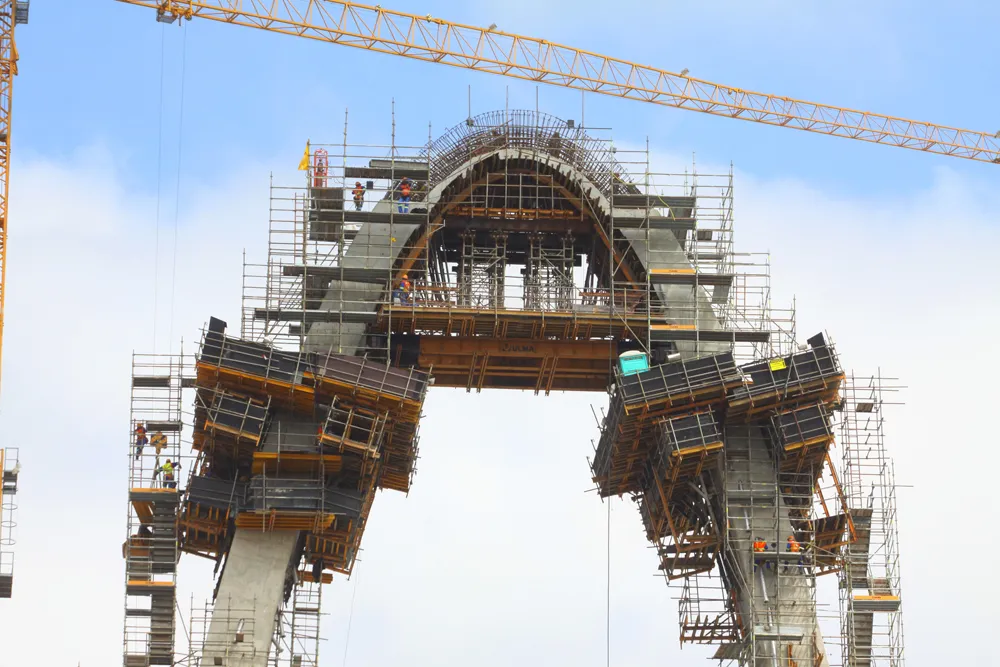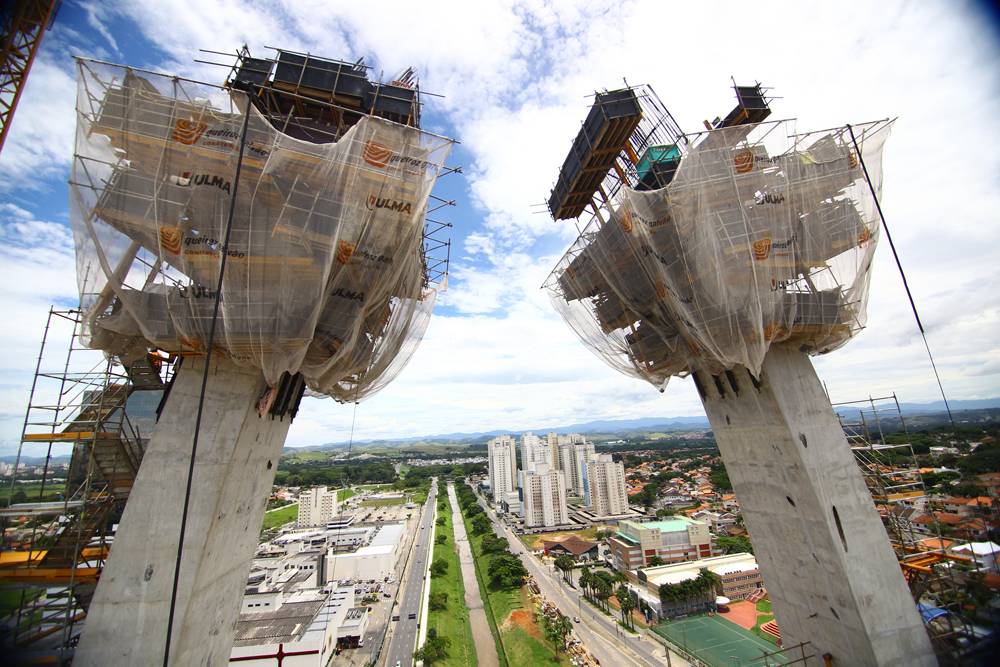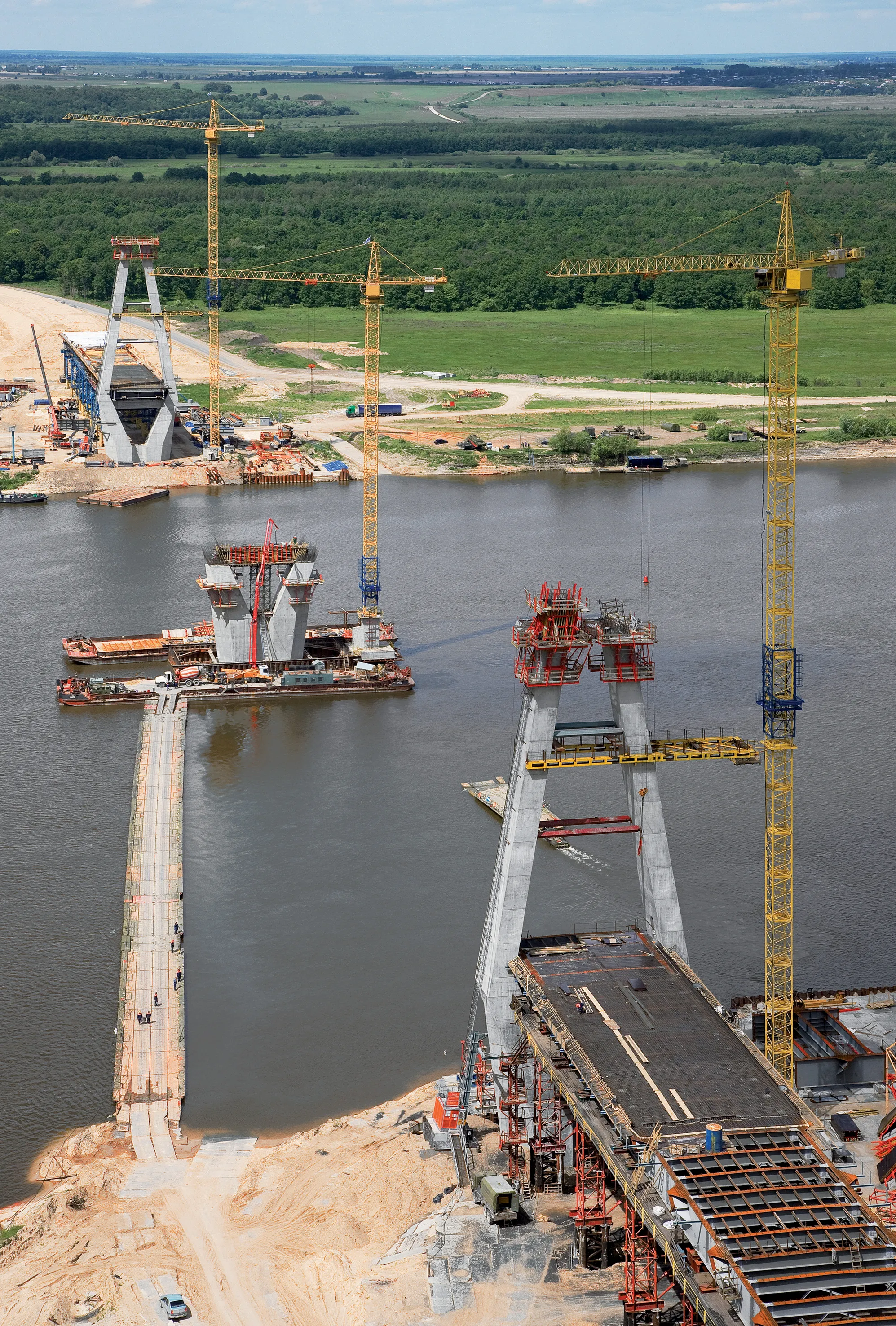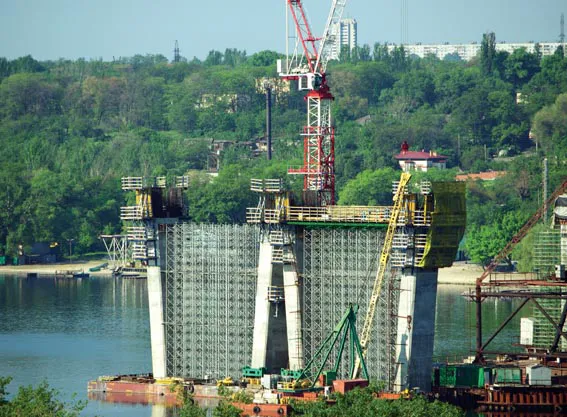
The Arch of Innovation is a cable-stayed bridge that will connect Zarur, São João, and Cassiano Ricardo avenues in São Paulo, Brazil. With a height of 100m, it has become one of the most iconic bridges in the country because of its distinctive arch shape.
This bridge will create a safer and faster route for more than 180,000 vehicles per day. It will also include a bicycle lane more than 3.6km long.
One of the most relevant requirements for this project has been the versatility of the formwork systems and the safety of those working on them. To this end, the engineering team developed an integrated solution with the ideal formwork and scaffolding systems and applications for the pylons and the roads that run between them.
The Queiroz Galvão construction company worked with ULMA's engineering solutions to meet the project’s stringent deadlines.
ULMA’s ATR self-climbing system was chosen for the two pylons with variable inclination and four-sided sections. It was erected in combination with the VMK timber-beam formwork for the outside and the KSP platform for the inside.
The self-climbing system was adapted to the inclination and elliptical curve of the shaft of up to 23º in the last concreting. The system has allowed high execution rates, three-day concreting cycles in 3.6m-high sections, without the need for a crane.

In addition, it has three levels of working platforms for carrying out work on the formwork, rebar and concrete, as well as for lifting the structure. This has maintained strict safety levels at great heights at all times. Despite the complexity of the geometry, the MK system in its different applications has completed all the structural requirements.
The two carriageways rest on an X shaped structure. They were built with ENKOFORM HMK, supported by T-60 shoring towers.
For construction of the bridge’s arch section, a structure made of MK and VM beams supported by T-60 shoring systems was set up. Custom metal profiles bear all the weight of the T-60 system.
To access the different areas of the bridge, BRIO stairs were completed on each side of the arch and in two separate sections. The first section is 60m high and rests on the ground. The second section, 40m high, consists of three independent staircases arranged on BMK consoles on the arch.









